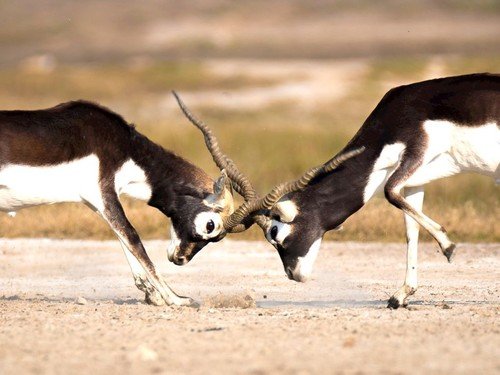Fighting to a standstill: the CEO versus the Organisation
While much effort has gone into better understanding management research and practice, we might not be getting any better at it.
Joseph Irwin Miller was the Chairman and CEO of Cummins Engines having worked there from 1934 until his retirement in 1977. By the time he retired, he had taken Cummins from a small state-based company to a Fortune 500 corporation with operations in multiple countries across the world.
In 1959, Miller offered a CEO's perspective on management (see below). I have been fascinated by Miller’s observations since I first read them in Gideon Haigh’s essay, Bad Company: The Cult of the CEO in 2003. The extract from Miller's article concludes with this:
And his real antagonist is neither the customer, nor his bankers, nor the union. His real antagonist is the organisation.
For me, Miller paints the picture of a CEO constantly trying to bring certainty to a situation that is inherently uncertain. It is a problem that today we would call ‘wicked’. A problem with a ‘no stopping rule’—Miller tells us about a manager trapped in an endless present.
As the CEO, Miller wants to (and feels the constant pressure to) shape direction, adapt to changing circumstances, and create certainty, but the levers available to him work indirectly and imprecisely.
In nearly every instance, the actions and interactions of people are at the centre of Miller’s uncertainty. Uncertainty comes from some combination of the demands of the Board, the actions of competitors, the desires of his employees, or the effectiveness of his workforce.
It would be easy to consign Miller’s observations to history. His views reflect his time; fortunately, managers and management have improved in the intervening years. I’m not convinced. I see Miller’s concerns in the faces of today’s managers. The behaviour Miller describes can be found in the CEOs of today's organisations.
The worries and behaviours are constant because the business environment has not changed fundamentally, the desire to control has not altered and the levers to shape direction remain instinctive and imprecise. If anything, business circumstances have intensified—become distilled and concentrated.
I see much advice, research, and information developed to help people manage organisations more effectively. Most of it is worryingly shallow. While much effort has gone into better understanding management research and practice, we might not be getting any better at it.
A CEO’s perspective, J. Irwin Miller:
To illustrate, let us suppose we can see inside the head of the president of a large manufacturing organisation. His company employs 20,000 people and operates half a dozen plants. It distributes its products in every state and in many foreign countries, and - most frightening of all - it has competitors.
Now let us suppose that these competitors are extremely vigorous, and that our president knows that to maintain his share of the market and to make earnings which please his directors, he must accomplish the following very quickly: design and perfect a brand-new and more advanced line of products; tool up these products in such a way as to permit higher quality and lower costs than his competitors; purchase new machinery; arrange major additional long-term financing.
At the same time, his corporation's labour contract is up for negotiation, and this must be re-written in such a way as to obtain good employee response and yet make no more concessions than do his competitors. Sales coverage of all customers has to be intensified, and sales costs reduced. Every one of these objectives must be accomplished simultaneously, and ahead of similar efforts on the part of his competitors - or the future of the company is in great danger. Every head of a corporation lives every day with the awareness that it is quite possible to go broke.
At the same time, he lives with the awareness that he cannot possibly accomplish a single one of these objectives. The actual work will have to be accomplished by numerous individuals, some actually unknown to him, most of them many layers removed from his direct influence in the organisation. It is because of this the president becomes frantic ... He becomes dogmatic. He issues orders. He says things are jolly well going to be done this way and no other. He says the company’s negotiators are not to give in on the union’s demands for premium pay or the union shop. He says every salesman must make so many calls each day. He says you can't add a single person to this office, which has already got too many people in it. And he pounds the table every time he says these things.
…he feels that this great, vast and ponderous organisation is his enemy and that inside its faceless exterior all his plans, his programs, his timetables will be diluted, slowed down, and ultimately defeated. Success seems to him to have come only in rare instances, and to have been of a temporary and ephemeral nature. He thinks of himself as being in a race that has no finish line. And his real antagonist is neither the customer, nor his bankers, nor the union. His real antagonist is the organisation.
Sources:
Gideon Haigh, Bad Company: The Cult of the CEO, Black Inc, 2003.
J. Irwin Miller, ‘The Dilemma of Corporation Man’, Fortune, August 1959, p.103.
[This is the reference, but I have yet to be able to track down the original. Out of interest, the title and timing of Miller’s article reflect the management debates of the time. William Whyte, a writer for Fortune magazine, published the best-selling ‘The Organization Man’ in 1956, arguing, in part, that the prevailing management ideology/system was producing risk-averse executives. Interesting how things don’t move on much.]
Picture Credit:
Photo by sumeet.moghe, https://www.flickr.com/photos/42805231@N00
Thanks for taking the time to read this post.
